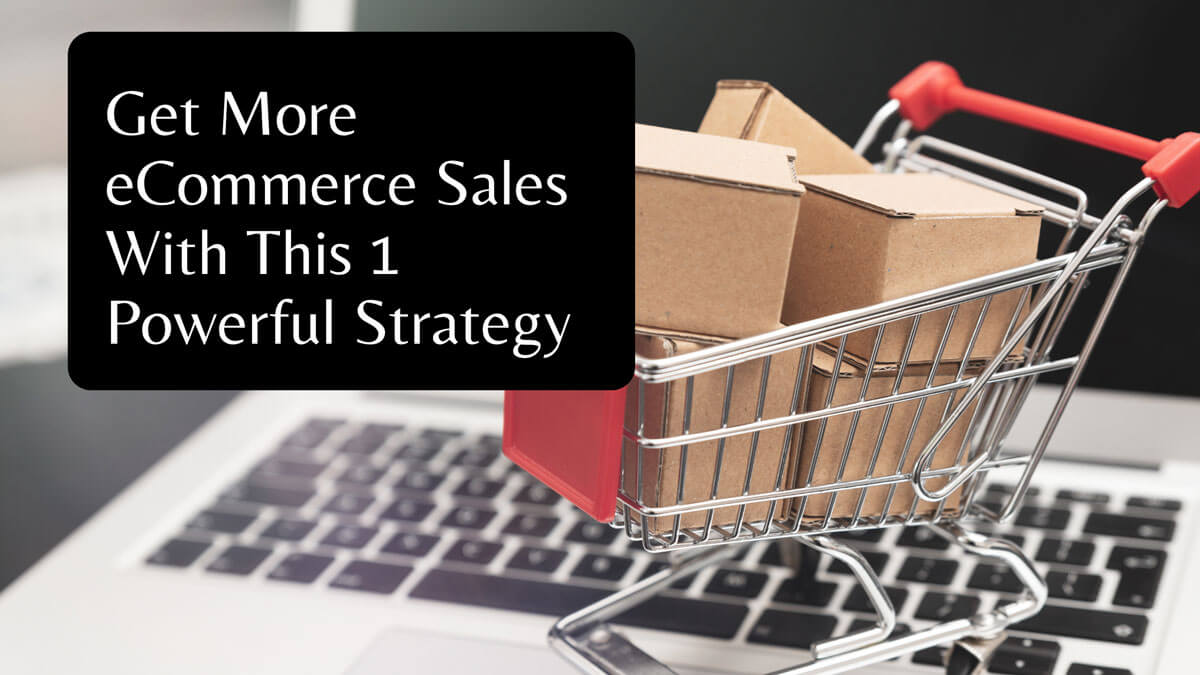Introduction – Get More eCommerce Sales With This 1 Powerful Strategy
Do you have an eCommerce website?
If so, then we are sure that you want to get more eCommerce sales.
You may be using email marketing as your strategy for eCommerce conversions, but it is time to take a step up from the typical strategies.
E-Commerce is a growing industry with eCommerce sales projected to reach $5.4 trillion by 2022.
For eCommerce stores, the key to success lies in generating and converting more eCommerce leads into eCommerce customers.
In this blog post, we would like to teach our readers one eCommerce marketing strategy that will help them get more eCommerce sales.
We will share how an online marketing strategy can help you generate new website visitors through lead generation strategies such as email marketing, sales funnels, and conversion rate optimization.
We are going to be giving you a step-by-step process of how to implement this strategy into your online store in order for it to work.
This eCommerce marketing strategy is lead generation and conversion through email marketing.
It will also use lead magnets and email marketing as its main tools in order to convert more website visitors into leads and then convert more eCommerce leads into sales.
We hope you enjoy the article!
- Introduction – Get More eCommerce Sales With This 1 Powerful Strategy
- Download Our Free eBook
- How To Use This Guide Correctly
- Step 1. Get A Conversion-Optimized eCommerce Website
- Step 2. Get Traffic To Your Online Store
- Step 3. Convert Your eCommerce Website Visitors To Leads
- Step 4. Convert Your eCommerce Leads To Customers
- Step 5. Earn 10 Times More Revenues Per Customer WIth This One Trick
- Step 6. The Final Chance To Make More Sale Per Customer
- How This Strategy Would Make More Money For Your Online Store
- Conclusion – Get More eCommerce Sales With This 1 Powerful Strategy
Download Our Free eBook
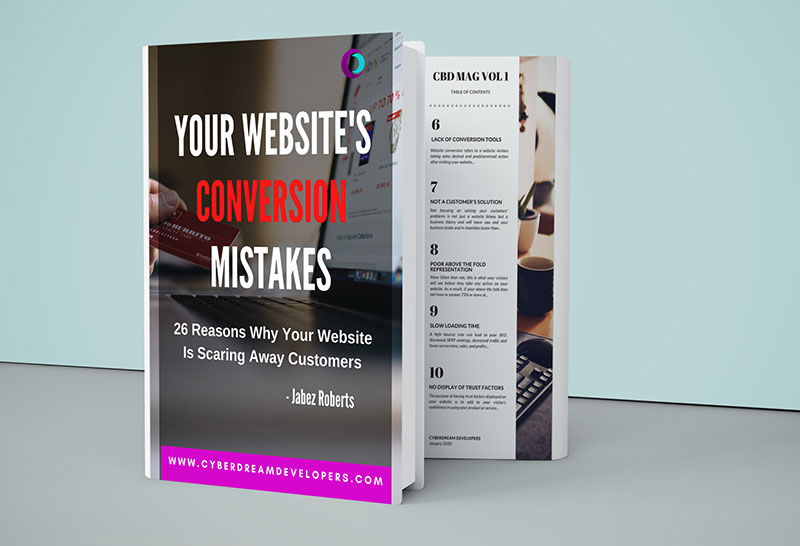
How To Use This Guide Correctly
We have written this blog post to help you grow your online store by converting more of your website visitors to customers.
The way we will achieve this is by converting more of your website visitors to leads then converting your leads to customers.
This is the second of a 2-part posting series that will teach you how to achieve this result.
In the first of these two posts, we looked at how to generate more leads for your online store.
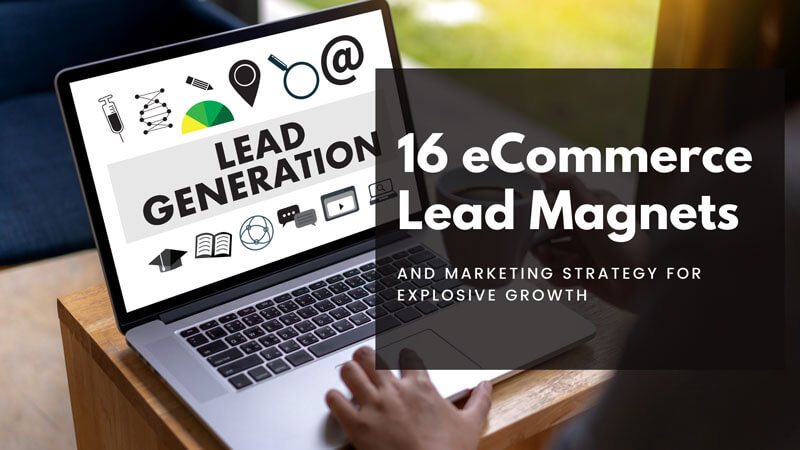
We learned what leads are and how they can grow your eCommerce business.
We also looked at 16 of the best eCommerce lead magnets that you need to be using on your eCommerce website to generate more leads.
Because we learned from that post how important leads are for your online store and how leads will grow your eCommerce business we have left it to this dedicated article to outline how we can use a powerful eCommerce marketing strategy to get more leads.
Now that we understand how this post is set up we would like to recommend that you read the following article to get the best results from this strategy.
This article will be building on our previous posts so if there is something mentioned in this post that you don’t understand you can check the supporting posts that will be linked in this section and the end of the post to learn more.
You can also leave your questions in the comment section below and we will do our best to answer all your questions as quickly as possible.
You can access those free articles below:
- Lead Generation Complete Guide: From Basic To 5 Powerful Strategies
- Inbound Marketing: All You Need To Know 2021 Plus Effective Strategies
- Content Marketing: All You Need To Know 2021 Plus Effective Strategies
- Outbound Marketing: All You Need To Know 2021 Plus Effective Strategies
- Search Engine Marketing: All You Need To Know In 2021 And A Powerful Strategy
- 40 Genius Ways To Increase Your Email Signups
If you feel overwhelmed by the massive workload to properly implement this strategy into your online store to start getting more sales then you can set up a free consultation with our team and we will handle all the heavy lifting for you.
Now that we have addressed all those important points let us dive right into the digital marketing strategy to get more eCommerce sales!
Step 1. Get A Conversion-Optimized eCommerce Website
The first step in this eCommerce marketing strategy is to have a conversion-optimized eCommerce website.
For those of you who don’t know what we mean by conversion-optimized, it simply means that your eCommerce site has the capabilities and features on it so that your visitors will convert into customers.
There are many aspects to having a conversion-optimized eCommerce website but for now, let’s just focus on changes you need to make with regards to lead generation.
A conversion-optimized website has features that specifically target lead generation and conversion for the purposes of growing your eCommerce business.
Many people think they can get more eCommerce sales if their webpage converts well but this isn’t true at all.
In order for your page to be effective and generate more leads, you need both an attractive eCommerce design as well as some powerful content and helpful content to generate website traffic and leads to your website.
With these two things, you will be able to get more online store visitors and convert more website visitors to lead and customers.
To summarize what needs to be done to make a website conversion-optimized, there are a few things that can be done:
- The first is to have a blog and social media presence in order to increase your brand awareness
- The second step is to have a properly designed eCommerce site with features such as a call-to-action button and forms
- The last step is to provide customer reviews on your products or services which will increase trust among potential customers which will boost your conversions.
These are just three things you can change today on your website and online presence to potentially get more conversions.
To help you get more conversion from your website and eCommerce store we have prepared a guide for you that teaches you the 10 worst reasons why your website isn’t converting.
You can find that guide here: 10 Worst Reasons Your Website Isn’t Converting
You can also download our free eBook that gives you 26 reasons why your website isn’t converting more visitors.
It is called, “Your Website’s Conversion Mistakes: 26 Reasons Why Your Website Is Scaring Away Your Customers.” You can grab your free copy of our eBook by clicking underlined and highlighted title above or the image below.

Step 2. Get Traffic To Your Online Store
Now that you have a conversion-optimized eCommerce site, the next step is to get traffic to your online store.
There are many ways that you can get traffic to your website and it’s important that you at least master a few of them.
There are also many types of traffic that you can get to your website that can be converted to leads and customers.
The golden rule here is that “not all traffic is equal.”
Now, before we look at how to generate traffic to your online store let’s quickly learn about some facts about traffic.
There are two ways that you can generate traffic to your website: organically called organic traffic, and inorganically called inorganic traffic.
Let us quickly learn what those are.
What Is Organic Traffic?
Organic traffic is any form of marketing that involves searches, shares, and word-of-mouth.
It’s the type of website traffic you get when someone searches for your website and visits it or when they share your website on social media such as Facebook.
Organic traffic can be a little bit difficult to grow because it doesn’t rely on too much effort on your part.
Organic traffic is something that you will want to have because it signifies potential leads for your eCommerce business and is generally more stable and predictable than inorganic traffic.
For example, if someone finds your website through a Google search, then this is organic traffic that has come to your website and can be a potential lead for your eCommerce business even if they do not convert to being a customer at that moment.
Organic traffic does not rely heavily on paid ads like inorganic traffic.
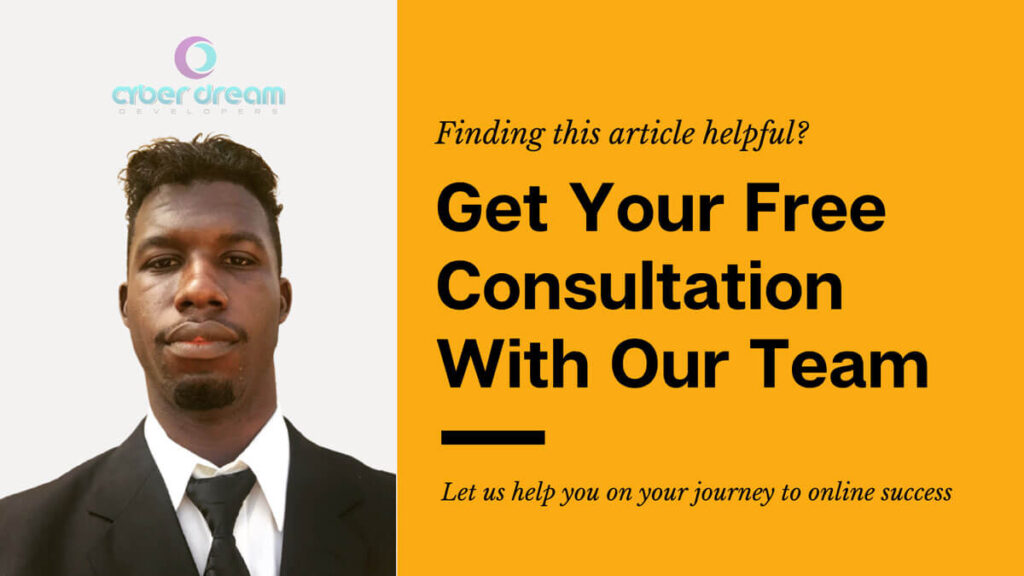
What Is Inorganic Traffic?
Inorganic traffic is any form of marketing that relies heavily on paid ads. It is more expensive than organic traffic and is more volatile.
Inorganic traffic will be a good source of website traffic if you know how to use it properly. An example of inorganic traffic can be when someone clicks on a Google Ad Pay Per Click (PPC) campaign and ends up visiting your eCommerce website.
This person is inorganic traffic and is also a potential lead and customer for your business.
You want to make sure that you are not relying too much on this type of traffic though because it tends to be less predictable as well as less stable than organic traffic.
Even though it gives you results almost overnight it can also disappear just as fast making it a very unstable and unreliable form of traffic to rely on to grow your business.
Now that we know about these two types of traffic we would like to recommend a helpful article to teach you all you need to know about organic and inorganic traffic.
It also teaches you how to convert this traffic to customers or clients for your business and choose which is best for you.
You can gain access to that article in the highlighted text above or by clicking the image below.
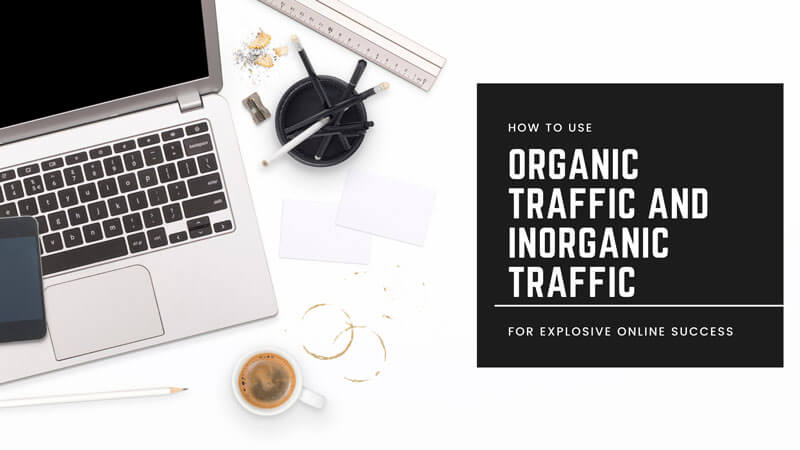
Now that we know about organic and inorganic traffic we must also quickly learn about the different types of traffic that these two traffic sources generate.
That is, we need to learn about cold traffic, warm traffic, and hot traffic.
Let us learn more about these below.
What Is Cold Traffic?
Cold website traffic is any form of traffic that doesn’t have any personal connection with your business, brand, or products.
For example, someone who has no idea who you are and what you do may be cold traffic.
If someone has never heard of your business before then they would be considered cold traffic as well.
Cold website traffic is not the best because it is often difficult to convert cold traffic into a lead or customer.
You will want to focus more on getting warm and hot website traffic than cold website traffic if you can help it.
This type of website visitor may still present an opportunity for you to convert them into a lead but it’s not something that should be a top priority for your business.
However, the majority of the traffic you come across in online marketing will be cold, and learning to convert this traffic to warm traffic will be highly beneficial.
What Is Warm Traffic?
Warm website traffic is any type of website visitor that has a personal connection with your business, brand, or products.
An example of this would be someone who shares your company’s posts on Facebook and also follows your social media pages.
Someone who signs up for email updates from you would be another form of warm traffic too because they have a personal connection to your business.
This type of website visitor will be much more willing to convert into a customer or lead than cold traffic.
You will want to focus on conversion rates with this particular type of inorganic website visitors first as opposed to looking at the total number of these visitors.
You should also know that not all types of warm traffic are created equal and each person can convert differently.
For example, a person who shares your company’s post on Facebook but doesn’t follow you on social media may be less likely to convert than someone who follows you and also posts about your eCommerce business too.
You do want to still focus on the conversion rates of each type of warm traffic as well though because they can vary quite significantly depending upon how often that specific type will interact with your eCommerce website or blog.
For example, a person who signs up for email updates is much more likely to purchase something from your eCommerce store at some point even if it takes months before they decide to make their first order- whereas people who only share stories might not convert into customers until after signing up through one of these other marketing channels.
Now that we know what warm traffic is let us learn about hot traffic.
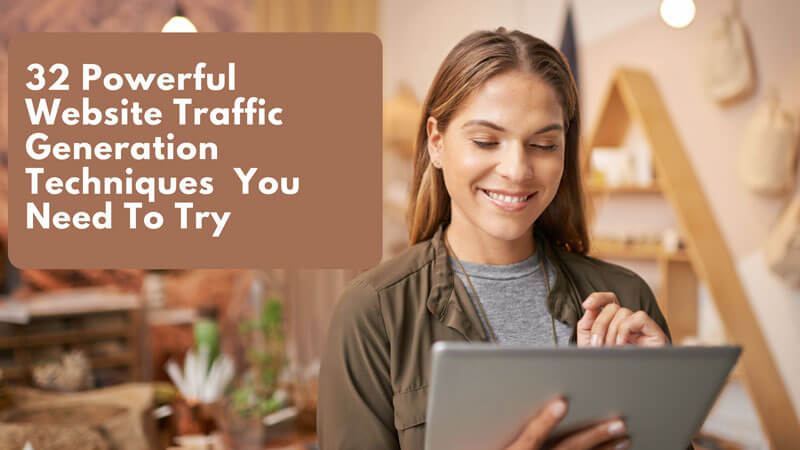
What Is Hot Traffic?
Hot website traffic is any form of traffic that has a strong connection with your business, brand, or products.
For example, someone who lives nearby your eCommerce store and has been to the brick-and-mortar location before may be hot traffic.
Someone who follows you on social media and watches your video marketing ads might also be considered hot traffic.
Since this type of website visitor already knows about the company this is a great type of inorganic traffic to convert into a lead or customer with ease.
You will want to focus on the total number of these visitors because they are more likely to convert than cold or warm website traffic.
What Is The Difference Between Warm And Hot Traffic?
The key difference between warm and hot traffic is that while warm traffic is familiar with your business and your brand, hot traffic is not only familiar but is extremely close to making a purchase.
We like to also consider hot traffic to being someone who has already bought from you.
Hot traffic is the easiest type of traffic to convert.
We have prepared a helpful guide for you to learn more about cold, warm, and hot traffic.
It will teach you everything you need to know about cold, warm, and hot traffic as well as how to convert these types of traffic to customers. You can access that blog post by clicking the image below or clicking here: Website Traffic Guide: How To Convert Cold, Warm, And Hot Traffic
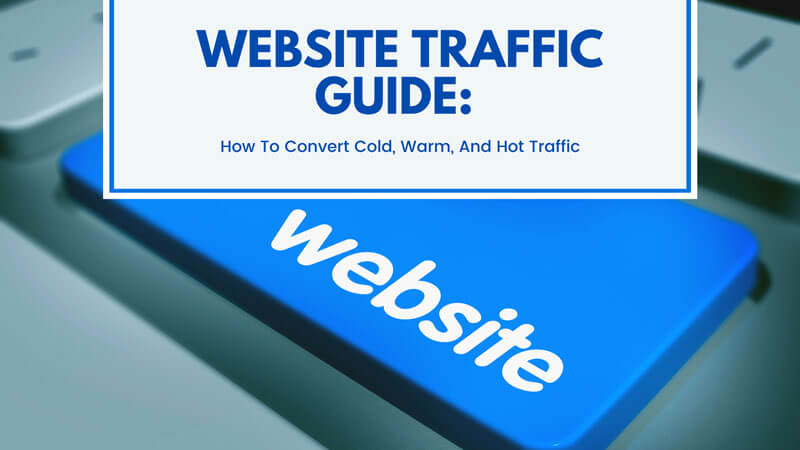
Now that we understand how the types of traffic and the different temperatures of traffic can greatly influence our conversion rates it is time for us to learn all the ways to generate traffic to your website.
We will provide a comprehensive guide that will teach you 40 methods that you can use to start generating traffic to your website.
Now that you understand the concept of cold traffic, warm traffic, hot traffic, organic traffic, and inorganic traffic, and how they influence your conversion rates you will be better able to decide which traffic generation technique will work best for you.
You can access our complete guide to website traffic generation strategies here or by clicking the image above.
Step 3. Convert Your eCommerce Website Visitors To Leads
One eCommerce strategy for more sales is to convert your website visitors into leads.
We will do this through lead generation where we will use a lead magnet to collect the email addresses of our prospects. This will convert our website visitors to a lead.
After we have converted them to a lead we will then use email marketing and a powerful email marketing strategy to convert our leads to customers.
In post 1 of this two-part blog post, we learned about lead generation, lead magnets, and how to grow our online store with lead generation.
We will quickly discuss how to convert more of your website visitors to leads by linking to some helpful, free resources below but first let us quickly recap what a is a lead in digital marketing, what is a lead magnet, and what is lead generation.
What is a lead in digital marketing?
A lead is someone who has shown interest in your business- at this point, the most a person wants to do is know more about your business before they make a purchase decision.
For one reason or another, a website visitor might not be ready to make a purchase.
They might not be ready just yet, they might still be learning more about their problems, or they might not know you and your business well enough or trust you enough to do business with you just yet.
In those instances, it would be easier to convert them to a lead, build a relationship with them using email marketing then convert them to a customer in the future.
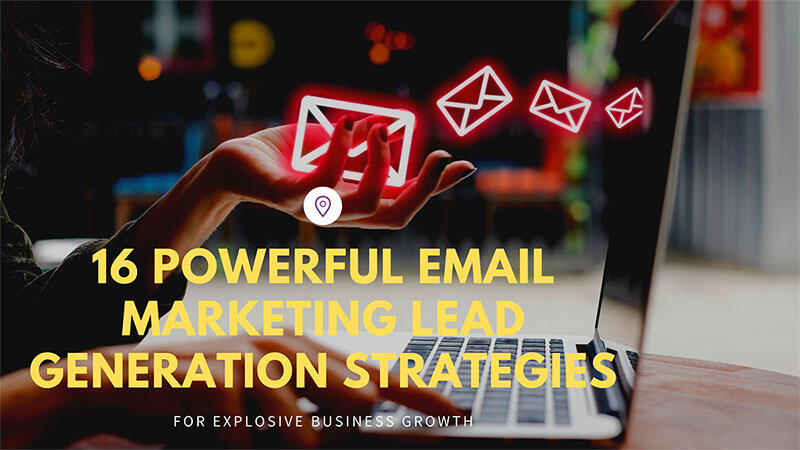
What is a lead magnet?
A lead magnet is a free offer that turns website visitors into email subscribers or leads.
Lead magnets could be eBooks, online courses, cheat sheets, and more!
A lead magnet must be something of relatively high value and is extremely relevant and helpful to your prospect or customer.
It should also be something that they would pay to get their hands on for it to work well.
What is lead generation?
Lead generation is a marketing tactic where you use your website to capture the contact information of eCommerce prospects and turn them into hot traffic leads.
This can be done through an offer, a lead magnet, or some other type of content on your site that will convert one eCommerce visitor into an eCommerce lead.
This strategy might not work as well for cold traffic but it does have its place when it comes to converting warm traffic and hot traffic since these types are already familiar with what you sell on your eCommerce store.
Leads are generated when a person interacts with your website, signs up for an e-mail newsletter, and becomes a subscriber on your email list.
The goal is to get more eCommerce leads and then convert them into sales by getting their contact information in the form of an email address. Some people like to call these “email addresses” instead of “leads”.
To generate more eCommerce sales we need to convert our website visitors into leads.
This means using a lead magnet on your site’s homepage (or any other page) where you want people to give up their email address so you can follow up with them later as well as through email marketing campaigns where we will use automation software like MailChimp or Aweber.
We will teach you how to do this for your eCommerce website in this post.
To learn more about lead generation please use the free resources below:
- Lead Generation Complete Guide: From Basic To 5 Powerful Strategies
- 16 Powerful Email Marketing Lead Generation Strategies
- 16 eCommerce Lead Magnets And Marketing Strategy For Explosive Growth
- 40 Genius Ways To Increase Your Email Signups
- Email Marketing to Grow Your Business: 15 Powerful Conversion Tips
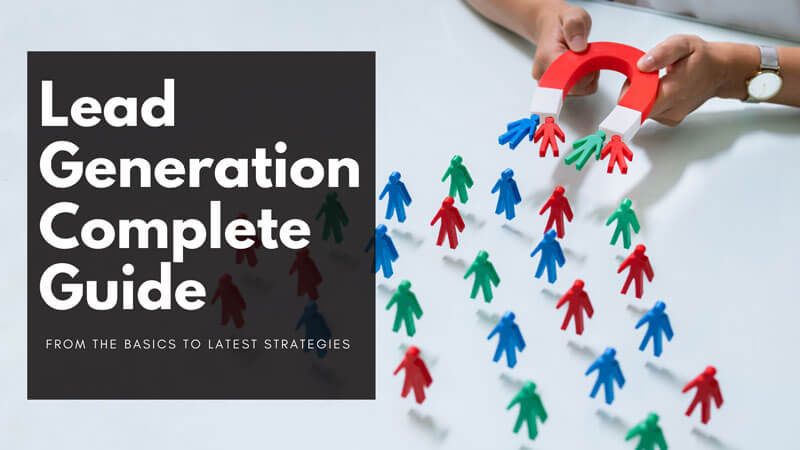
Step 4. Convert Your eCommerce Leads To Customers
In step 4 of this eCommerce marketing strategy for more sales, we are going to learn how to convert the leads we are generating in step 3 to customers.
The way we will do this is by using email marketing.
Step 4.1 Using Welcome Email To Get More Sales
Some of you might be wondering what Email Marketing is.
Well, it’s pretty simple really.
Email marketing is the art of getting someone to willingly give out their email address in order to stay up-to-date on a company/brand.
Once we have an email address, we can send our customers emails about sales and new items on the site that they are most likely interested in.
Email marketing is a powerful online marketing channel that you can use to grow your business online.
Email marketing is also a way to get eCommerce leads and convert them into eCommerce customers.
There are many ways you can use email marketing to grow your business and online store but in this post, we will focus on one of the most effective types- lead nurturing or automated emails.
Lead nurturing is a process in eCommerce marketing where you use automated email campaigns to nurture your e-mail subscribers and turn them into eCommerce customers.
Lead nurturing is a lot easier than it sounds because all the work can be done through an automation software like MailChimp or FluentCRM which includes different types of email templates, segments, sequences, and more that are specifically designed for lead nurturing.
Here’s how we would convert our own eCommerce leads into eCommerce sales:
Generating Leads (step 3) -> Converting Prospects To Leads (lead generation strategy)-> Convert Leads Into Sales With Automated Emails (Email Marketing Strategy) (step 4)
Email Marketing will help you convert leads into customers, which is what we need when running an online store or any other type of business – getting more sales.
The way we will pursue this conversion is by using a drip campaign to build a relationship with our subscribers.
A drip campaign is a series of eCommerce marketing emails that are sent on a schedule to e-mail subscribers.
When someone signs up for our eCommerce newsletter, we can send them a “Thank You For Signing Up” email campaign or “Welcome Email Campaign.”
This is where we would send our first series of emails to our prospects to warm them up to us.
It can be as simple as saying “Welcome to our online community!
Be sure to check out the latest deals! Use this 10% off discount code to checkout with your first order in the next 24 hours” and they will think “oh hey, so this company is awesome! Let me use my discount code before it expires.”
Your welcome email drip campaign can be as complicated and deep as this 3-email welcome drip email sequence that we created. It also includes 9 different email templates that you can take and use as they are or tweak and make unique to your business.
They are free to use. You can access them here: 3 Effective Sign-up Drip Campaigns for Effective Email Marketing Conversions
Welcome emails are effective in boosting open rates, click-through rates, and conversion of your campaigns.
In fact, according to Campaign Monitor welcome emails have a 91.43% open rate, can generate up to 320% more revenues than promotional emails, and can see more than 3x the revenues and transaction rates over regular promotional emails.
We want these people to know about us as much as possible because what’s going to happen then if they see something they like? They’re going to buy it from us without thinking twice.
This strategy works pretty well with warm traffic or hot traffic since both types have already interacted in some way with your eCommerce store before signing up for your e-mail list.
This means they might be more interested when you start talking about your products because they are warm or hot and so are more receptive to buying.
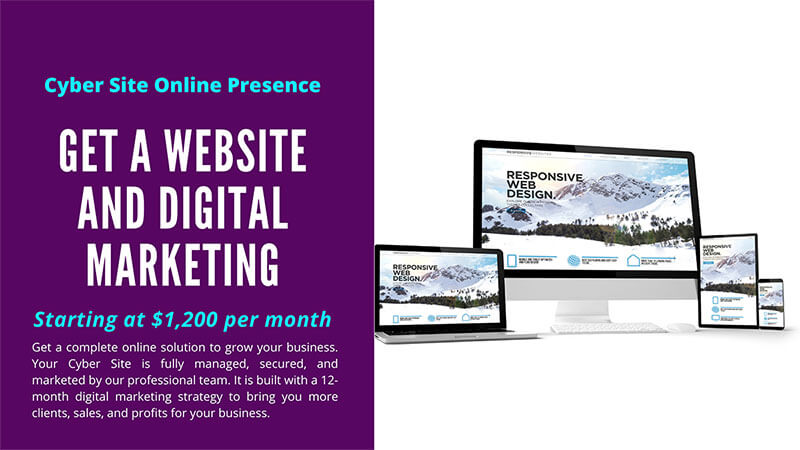
Step 4.2 How To Get A Customer For Life
After we’ve used a welcome email drip campaign to convert as many of our first-time subscribers we will move on to the next phase of our conversion strategy: relationship building.
We will use email marketing to build a relationship with our email subscribers.
The reason why we will do this is that our objective in email marketing is never to get a sale but to build a relationship with our customers, learn more about them, serve them the best product at all times, and offer them massive value at every turn.
We do this because this is the pathway to online success by creating a powerful brand that resonates with customers.
This is one thing we will do to create a brand that customers love, trust, and are loyal to. That is how we will get customers and repeat customers for our business, and set up our online store for long-term success.
The way we will do this is by using drip campaigns and nurture campaigns to build a relationship with our prospects.
Drip campaigns have already been discussed in the previous subsection in step 4.21 so let us now learn about email marketing nurture campaigns.
A nurture campaign is a series of eCommerce marketing emails that are sent on a schedule to email subscribers.
Nurture campaigns will be the next step after we have used a welcome email drip campaign and then built rapport with our first-time e-mail subscribers.
It is where we can send them eCommerce marketing emails after they’ve been subscribed for some time, like say six months or one year from when they signed up for our eCommerce newsletter (signaled by receiving their “Thank You For Signing Up” email).
This is also how long it takes us to build trust in what we offer so show them more things about why they should buy from us since we know this person has interacted with us before signing up.
This means these people will be building a relationship with our business for over a year. This will give them an emotional connection with our brand that will make them more comfortable buying from us for years to come.
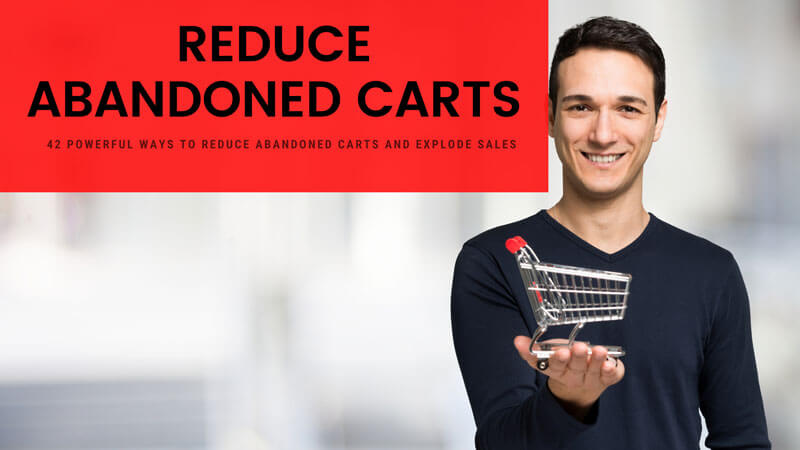
Nurture campaigns and drip campaigns are very similar but differ in the point that nurtures campaigns build a deeper and more emotional relationship with your prospects than drip campaigns.
A nurture campaign is more complicated and takes longer to implement.
The goal of a nurture campaign is to deepen the relationship with prospects and create an emotional connection.
Do not forget that eCommerce marketing implies long-term success so this means we need to think in terms of years, months, or even days strategically without forgetting about numbers like conversion rates.
We want our e-commerce store to last as long as possible because it will give us more time to spread out costs which can be significant over time.
Ecommerce sales are all about building relationships and giving customers what they want while being fully transparent at every turn in order to build trustworthiness.
This helps prevent negative reviews or complaints from happening down the road by showing your customer how you value them before any issues ever come up!
To help you better understand how to use drip campaigns, nurture campaigns, and email marketing to build a relationship with your prospects we will provide a list of free resources below:
- Drip Campaign and Nurture Campaign: The Differences in Email Marketing
- 3 Effective Sign-up Drip Campaigns for Effective Email Marketing Conversions
- 11 Email Marketing Best Practices 2021: How To Write Engaging Emails For Your Business
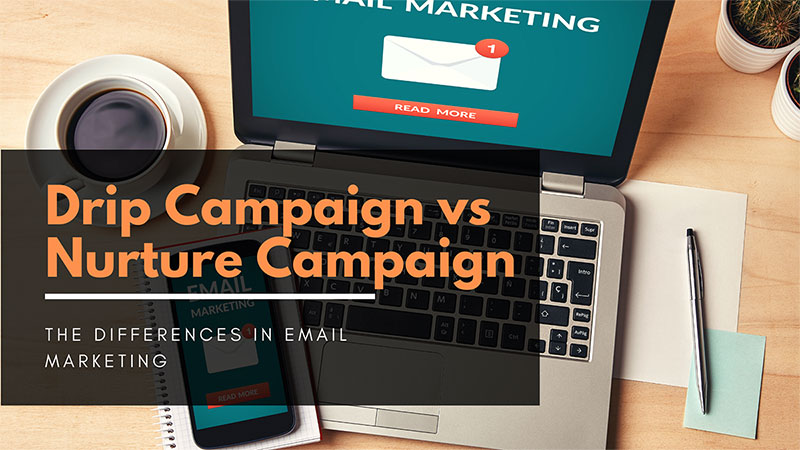
Step 5. Earn 10 Times More Revenues Per Customer WIth This One Trick
In step 5 of this strategy, we are going to introduce one trick that you can use in any business to earn even 10 times more revenues from each client or customer.
It will work on any type of website whether it’s eCommerce or service-based.
Any size business from a startup to a corporation can use this little trick as well. It can be used to earn as little as 2 times more revenues per customer up to even 100 times more revenue per customer.
Are you ready to learn more about this trick and how you can use it in your business?
Then let’s go!
This trick that you can use is called a Sales Funnel and when used right it can catapult your business from being a million dollar per year business to a hundred million dollar per year business. It can move your business from making $10,000 per year to making $100,000 per year.
Now that we have all of that out of the way it is time to learn what is a Sales Funnel and how you can start using it in your business.
A sales funnel is a process of turning casual website viewers into paying customers.
It does this by teaching you how to design a website that attracts people with its content and then convert them into leads using automated strategies such as lead magnets for example.
Once turned into prospects, it will show them from the top down how to work their way to becoming at least one long-term customer over time through value proposition like discounts and product bundling, etc.
That is a technical way of saying that a sales funnel is the process of better serving your customers at each stage of the buyer’s journey that they might be. You can learn more about the buyer’s journey by reading this section of our post on lead generation.
By using a Sales Funnel software like ClickFunnels and Cartflows you can create a custom buyer’s journey for your customers where you provide them with the ideal product solution at each stage of the journey that they might be at.
That means that a person who is only ready to become an email subscriber will be allowed to become an email subscriber while a person who is interested in making an immediate purchase will also be given that opportunity.
The group of customers who are interested in making a purchase will be given the opportunity to buy all the products or services that they need to solve their problems.
You can learn more about sales funnels and how to add them to your business by using the free resources below:
- 1 Powerful Digital Marketing Strategy for Small Businesses and Startups
- Sales Funnels: All You Need To Know In 2021 Plus Effective Strategies
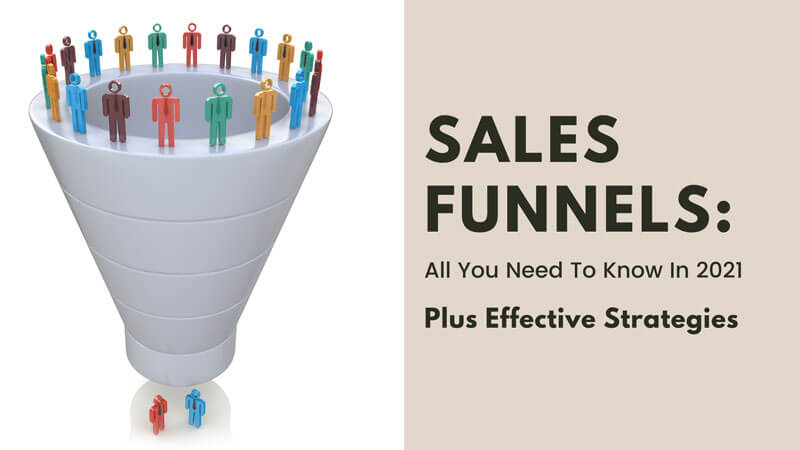
Step 6. The Final Chance To Make More Sale Per Customer
Using a “Thank You” email campaign after a customer makes a purchase is an opportunity to make another sale.
This stems from the fact that the easiest person to sell to is someone you’ve just sold to.
At this stage, they are hot traffic and we know that is the easiest traffic to convert.
Additionally, someone who has just made a purchase is more likely to keep buying than someone who has not yet made a purchase.
It’s just the way the psychology of selling works and it’s best for us to use this in our and our customer’s best interest.
The “Thank You” email campaign is designed to give our customers the opportunity to buy a complimentary product from our store.
This can be as simple as sending them a link via email after the checkout with the complimentary product they could find useful or even sending them a discount code that expires in an hour to make another purchase.
This will give you an opportunity to make another sale and give your customer the opportunity to move away from the pain of the problem your products solve and toward the pleasure your solution brings.
You can learn more about the “Thank You” email campaign and 13 other types of email campaigns your business and the online store could benefit from by clicking the picture below or this link: 14 Types of Email Marketing Campaigns for Small Businesses: How to Increase Revenues!
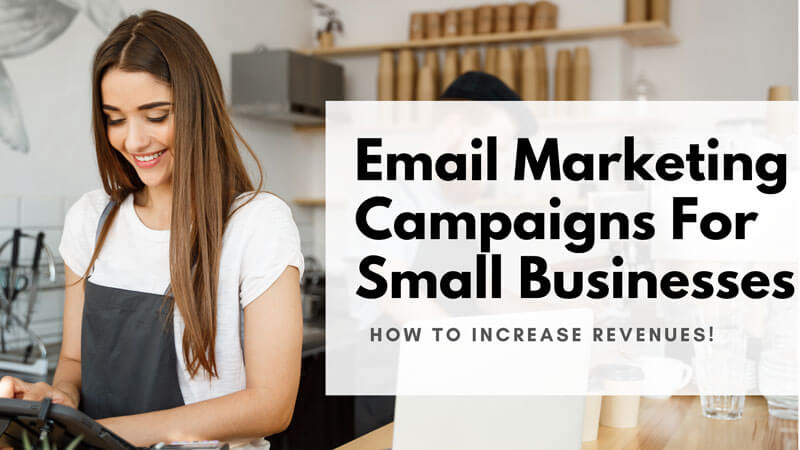
How This Strategy Would Make More Money For Your Online Store
In this section, we are going to quickly look at a simple example of how this strategy would make money for your online store.
For this section, we will compare the old way of getting traffic to your website and trying to convert this traffic to customers with our way of getting traffic to your website and converting them to leads, using a sales funnel, and our marketing strategy to make a sale.
In both examples we will assume that we get 1,000 website visitors for the day, the average order value is $9 and we sell three items at the store:
- A cake mixer that costs $100
- A cake mixing bowl that costs $9
- Cake mix that costs $2.99
- Frosting Master Pack that costs $19.99
- Our personal baking course is sold at $249
We will also assume we use a lead magnet of an online course on how to make 10 of our most popular types of cakes.
Are you ready? Let’s go!
The Traditional Way
Using the traditional way we will assume that in one day your online store gets 1,000 visitors.
If your website’s conversion rates are the average 1.89% then from these 1,000 visitors you will get only 19 customers on average.
If the average order value on your website is $9 then you would’ve made an average of $171 (19 customers making an order of $9) from those 1,000 website visitors.
Total Order Value For The Day: $171
That is all the money your online store would make from your traffic using the old way.
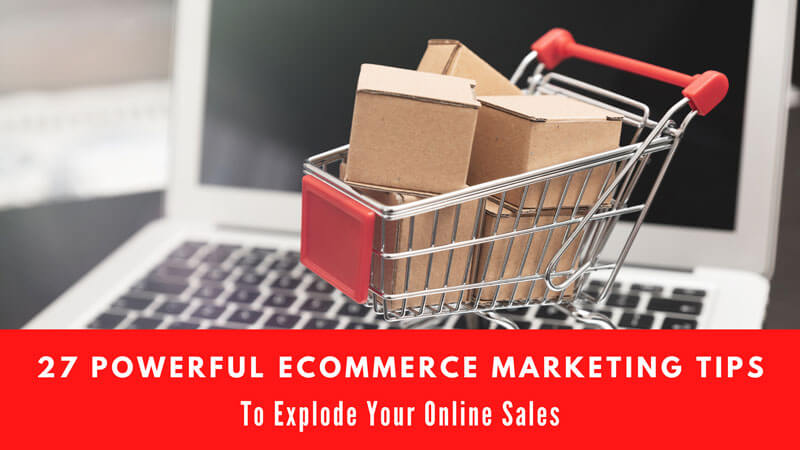
Using Our Strategy
Using our strategy we will not go immediately for the sale alone but instead, we would use a different approach.
The magic here is that we will still allow those 19 customers from the old way to be able to make an immediate purchase.
That means we will still be able to earn that $171 from the old way.
Now we also will assume that our email marketing conversion rate using our cake baking course for our 10 most popular cakes as a lead magnet is 35%.
That means that 350 new email subscribers have been earned from our 1,000 website visitors.
Now we will assume that with a 91.43% open rate to our welcome email we will get 320 of our new subscribers opening our welcome email.
If we use the average of a 26.9% click-through rate then that means 86 of our new subscribers will go to our landing page from our welcome email.
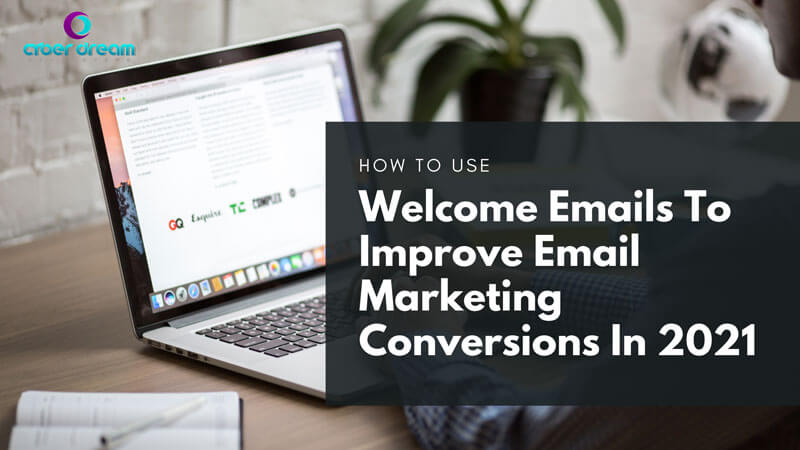
On this landing page, we will offer them the opportunity to make a purchase of our own branded cake mix that is sold at $2.99. We will assume each customer buys one and our landing page conversion rate is 50%.
From this, we earn $2.99 per cake mix being bought by 43 customers giving us $128.57.
Now, we will introduce our sales funnel and offer them the chance to upsell and buy a new cake mix.
Of our 43 new customers let’s only assume that 2% of our customers bother to make that purchase.
That means that only 1 cake mixer is sold at $100 per cake mixer.
That is an extra $100 in revenues.
Now we will also assume that from the 43 customers visiting our landing page and being given the opportunity to buy our cake mix we have given them all the One Time Only Offer at checkout to add our baking course.
Because it is a One Time Only offer that isn’t available anywhere else it is discounted by 50% from $249 to $124.5 and we assume that 10% of our customers or 5 customers take advantage of it.
Now we have made $124.5 per baking course for 5 customers or $622 from our customers.
We will end our sales funnel here but not our selling experience.
As part of our “Thank You” email campaign we will offer a 25% discount to get the Frosting Master Pack. Our frosting pack now costs only cost $14.99
All our customers will be shown this offer.
That means that the initial 19 customers from the old way will be given this offer.
That also means the 43 customers who bought our cake mix will be shown our offer.
We won’t add anyone else because these are the two largest groups of customers that we have. Every other customer is derived from one of these groups.
That gives us a total of 62 new customers receiving our “Thank You” emails. For this, we will assume a modest 30% conversion rate for the simple reasons we explained about the “Thank You” email above.
That means we have 19 new purchases at $14.99 giving us an additional $284.81.
Now for the total, we’ve earned:
- We earned $171 from the old way of selling online
- We earned $128.57 from the 43 customers buying our cake mix
- We sold one cake mixer at $100
- We earned $622 from our One Time Only baking course offer
- We earned $284.81 from our “Thank You” email campaign
This gives us a total of $1,305.81 from doing things our way! That’s over $1,134 more per day!
The best thing about this is that this is the sales from your first day alone. You now have 350 new email subscribers that you can nurture and sell to forever.
At some point, they will become customers if you use the strategy we outlined in this article.
Conclusion – Get More eCommerce Sales With This 1 Powerful Strategy
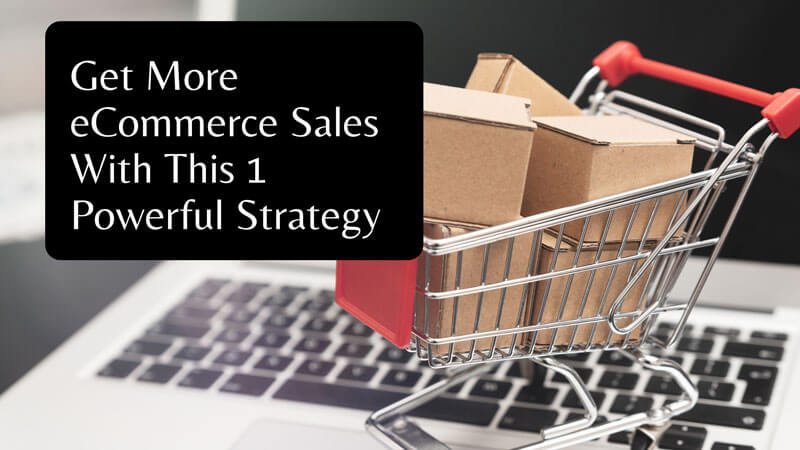
In this blog post that is part 2 of a two-part post, we have given you a step-by-step outline of an eCommerce marketing strategy for more sales in your online store.
We know it is a lot of work and there are many things to learn. We know you may have a lot of questions.
If there is something you’re unclear about then feel free to ask your question in the comment section below and we will help you.
If you would like to pass on all this work to a professional to implement this strategy while you focus on running your online store, managing inventory, and customer satisfaction then allows our team of expert marketers to help you today.
Set up a free consultation with our team and we will be happy to help you implement a powerful and effective eCommerce marketing strategy for more sales in your online store.
You can set up a free consultation here.
Be sure to check out one of our recommended articles below.
See you in the next post to online success!


